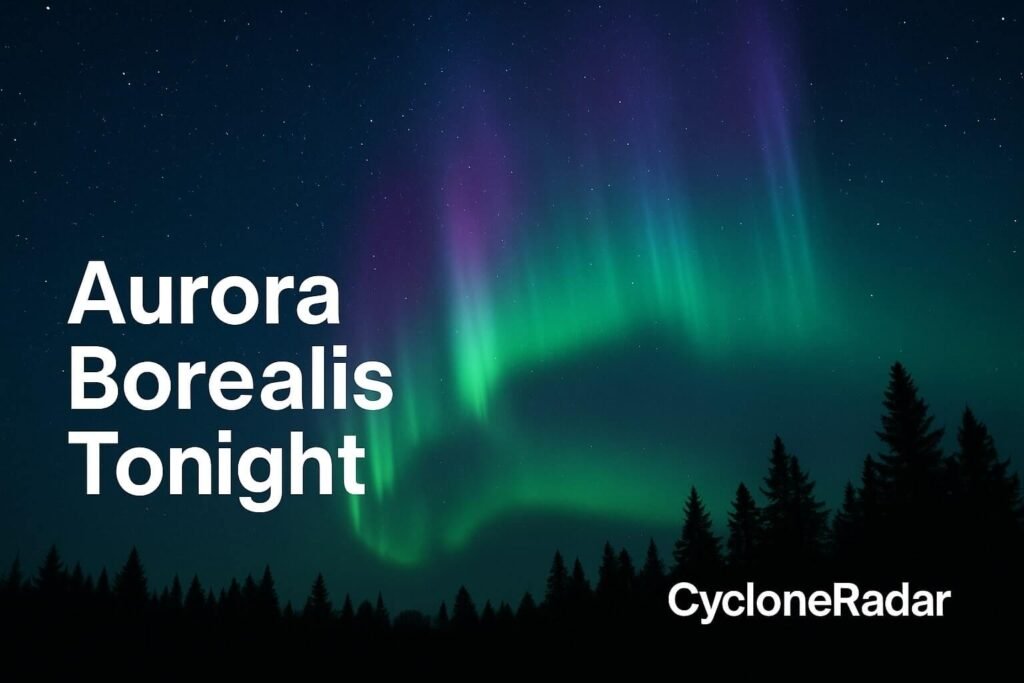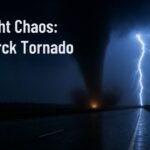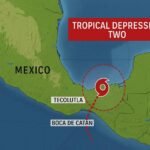Tonight’s skies might just be putting on a show you don’t want to miss. A stream of solar wind flowing from a large coronal hole on the sun is interacting with Earth’s magnetic field, and that means the Aurora Borealis could be dipping into parts of the northern United States. Yes, you read that right. That colorful, surreal sky painting usually reserved for Arctic adventurers and remote stargazers might just peek over your horizon tonight if the conditions line up.
This is all thanks to an ongoing moderate geomagnetic disturbance sparked by activity on the Sun that’s rippling across space right now. NOAA’s Space Weather Prediction Center has issued a G1 to G2 geomagnetic storm watch, and that opens up a viewing window for those living in a lucky slice of America. That’s right, the glow could spread as far south as northern Minnesota, Wisconsin, North Dakota, and Maine, with some models teasing a stretch into places like Vermont, New Hampshire, and even upstate New York if the storm intensifies.
The Aurora Borealis forms when charged particles from the sun, flung out via solar wind, slam into Earth’s magnetosphere and funnel toward the poles. When they collide with gases in our atmosphere, they create glowing colors—green, purple, red—that ripple across the sky. It’s a wild dance of solar physics, magnetism, and upper-atmospheric chemistry, and tonight, the orchestra is tuning up.
According to NOAA’s latest data, the Kp index, which is like a storm thermometer for space weather, is expected to reach values between 4 and 5. That level is usually just enough to bring the northern lights to the horizon for states like Washington, Montana, North Dakota, Minnesota, Michigan’s Upper Peninsula, and Maine. In those regions, if the skies stay clear and you’re away from city lights, you could be treated to green arches or curtains that shimmer just above the northern treetops. If the index spikes unexpectedly higher, say to a solid 5 or more, the reach could extend deeper into the U.S., brushing into South Dakota, Idaho, Vermont, and northern Wyoming. That kind of surge can happen fast, often without much warning.
For anyone planning to chase the Aurora Borealis, a few things can give you an edge. First, make sure to get away from light pollution. Even a small town’s glow can overpower the delicate color bands of an aurora. Look for a dark spot with a clear northern horizon. Mountains, trees, or buildings blocking the view might steal the show from your eyes. Then, check the real-time space weather feeds from SWPC or Soft Serve News. These tools update every 15 minutes, letting you know if the Kp index is climbing, and whether you should head out or wait.
Timing is also everything. The sweet spot tends to fall between 10 PM and 2 AM local time. That’s when the night is darkest and the magnetic storm is usually strongest. Some early flare energy from a recent solar outburst is expected to arrive around sunset, adding an extra charge to the storm and potentially enhancing visibility right when the sky dims. If you’re lucky enough to be under clear skies in the right latitude, those first few hours after nightfall could deliver.
While you’re scanning the sky, keep expectations balanced. At these latitudes, the Aurora Borealis is rarely overhead like it is in Alaska or Iceland. More often, you’ll see faint green or purple glows near the horizon, sometimes pulsing or slowly waving. You might even think it’s a cloud at first until the colors begin to move and swirl. If you’re using a newer smartphone, switch to night mode and try a few long exposures. Cameras often pick up the colors long before our eyes do.
Now for those further south, in states like Iowa, Indiana, or Ohio, it’s more of a long shot. But it’s not impossible. Every few years, a strong solar event surprises even forecasters and pushes the Aurora Borealis into unexpected places. If tonight’s event flares up more than predicted, you could catch a ghostly arc or faint band with the right setup and patience. Either way, it’s worth glancing north every now and then.
On the science front, tonight’s activity isn’t just about pretty lights. Geomagnetic storms like this can also nudge satellites off course slightly due to atmospheric drag, interfere with high-frequency radio signals used by pilots and emergency services, and create temporary voltage disturbances in power grids, especially in northern regions. The current G1 to G2 forecast doesn’t pose major threats, but it does have engineers and flight planners keeping an eye on systems through the night.
What makes tonight unique is the combination of solar factors: we’re in an active phase of Solar Cycle 25, which means sunspots are more numerous and flares are more frequent. This coronal hole, a cooler region in the Sun’s magnetic field, is particularly well-positioned and wide, making it ideal for hurling solar wind directly toward Earth. Plus, a medium-class flare on June 26 added a burst of extra plasma to the stream, arriving just in time to boost visibility as darkness falls across North America.
It’s all happening at the intersection of timing, location, and luck. If the solar wind continues as expected and the Earth’s magnetic field remains receptive, the Aurora Borealis could deliver a brief but magical visit to states that don’t often see it. For many, it could be a once-in-a-decade moment, especially in places like northern Idaho, Vermont, or Michigan, where a clear night and a dark sky could yield a bucket-list-level experience.
So grab your coat, charge your camera, and head somewhere quiet. Whether you catch just a glimmer or a full-on lightshow, you’ll be witnessing a direct connection between Earth and Sun, painted in electric greens and shifting violets. That’s space weather in action, and it’s one of the few ways we on the ground get to see it with our own eyes.
If you manage to snap a photo or spot the lights, share your sighting with others. Citizen science groups and aurora trackers thrive on those reports. Every picture, every story adds to our understanding of how the Aurora Borealis works and where it wanders when the Sun sends its messengers our way.
Stay safe, stay curious, and keep watching the skies tonight.


